Story for Bunyon Velo Issue No. 07 by Sarah Swallow. Photos by Tom Swallow and Sarah Swallow
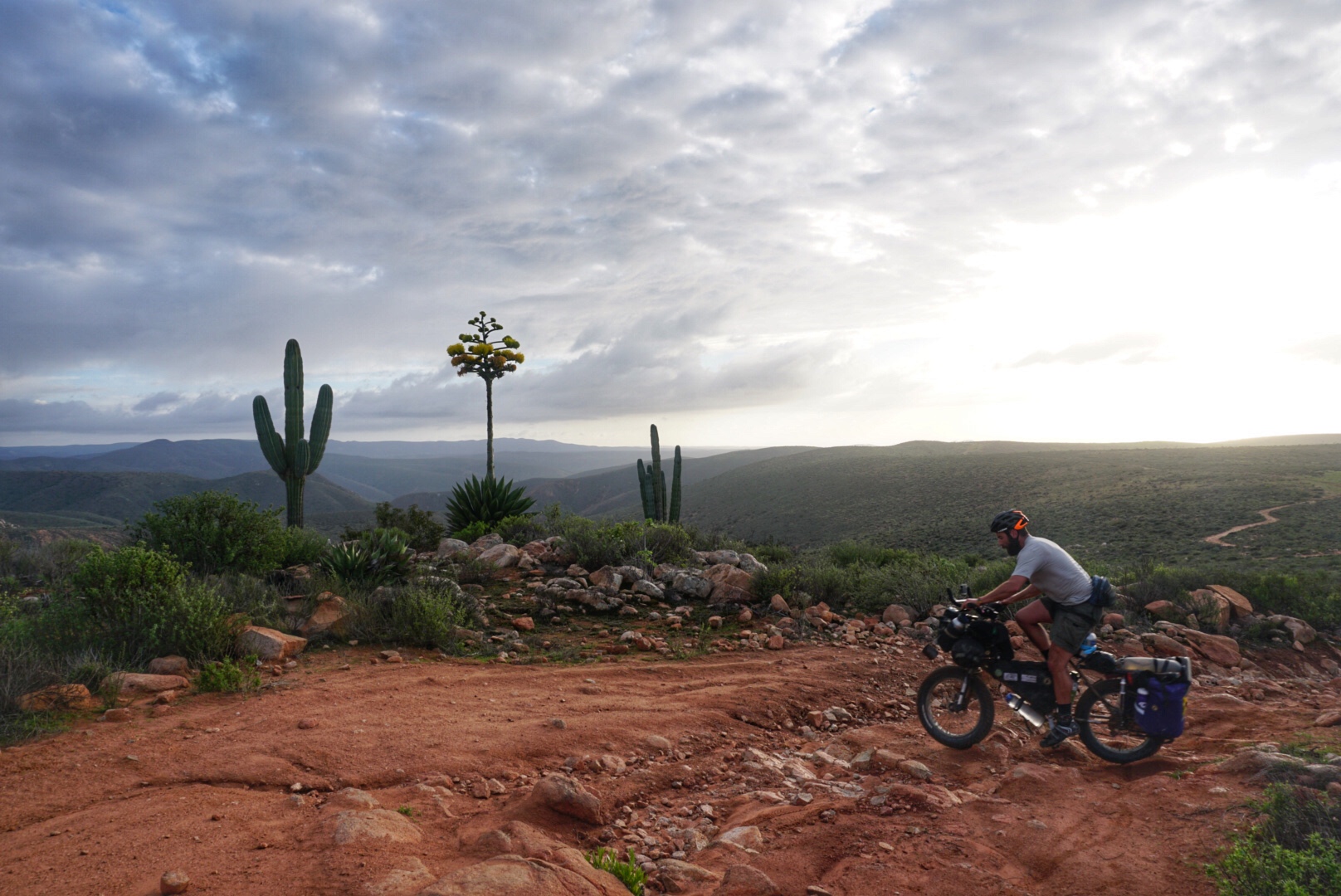

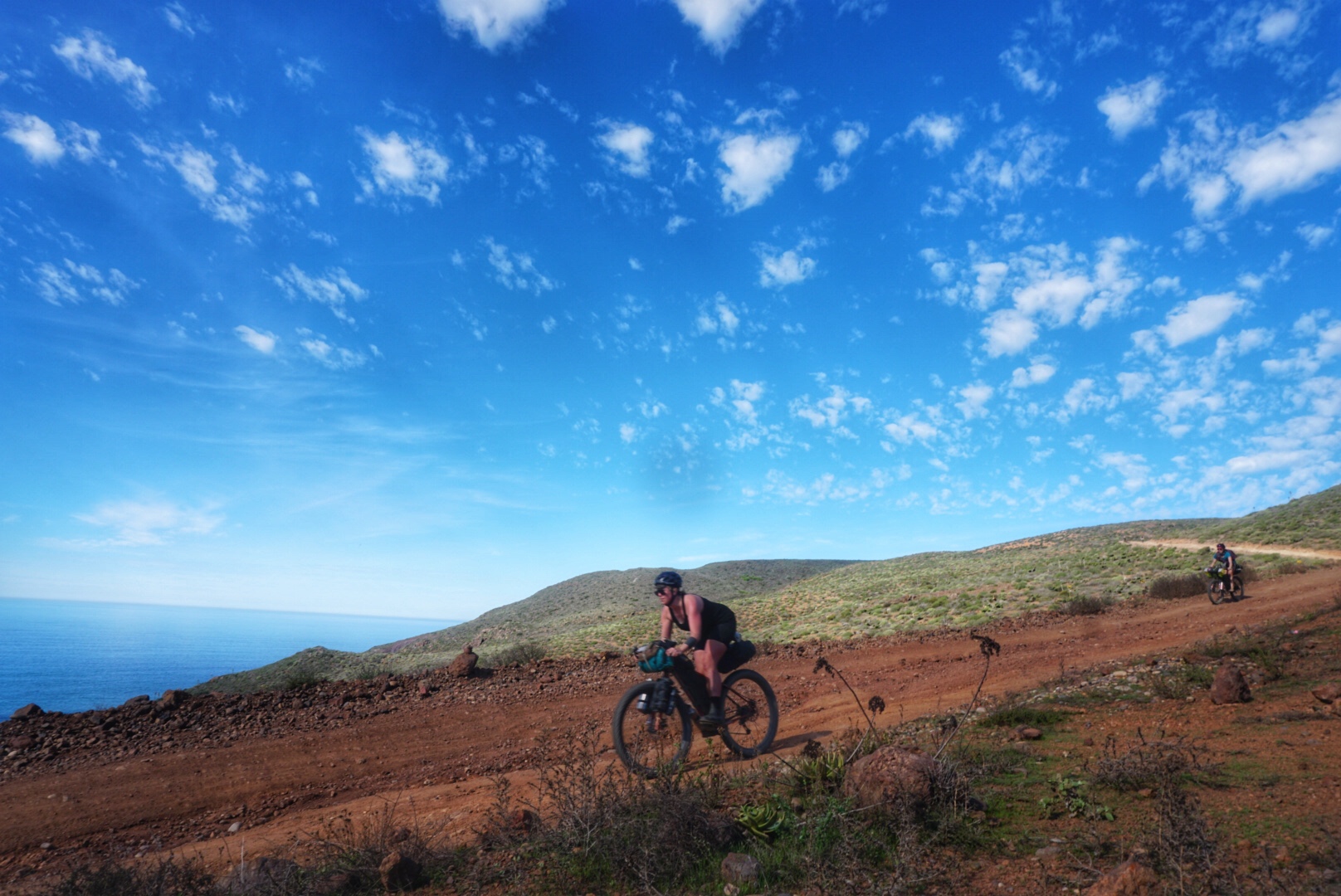
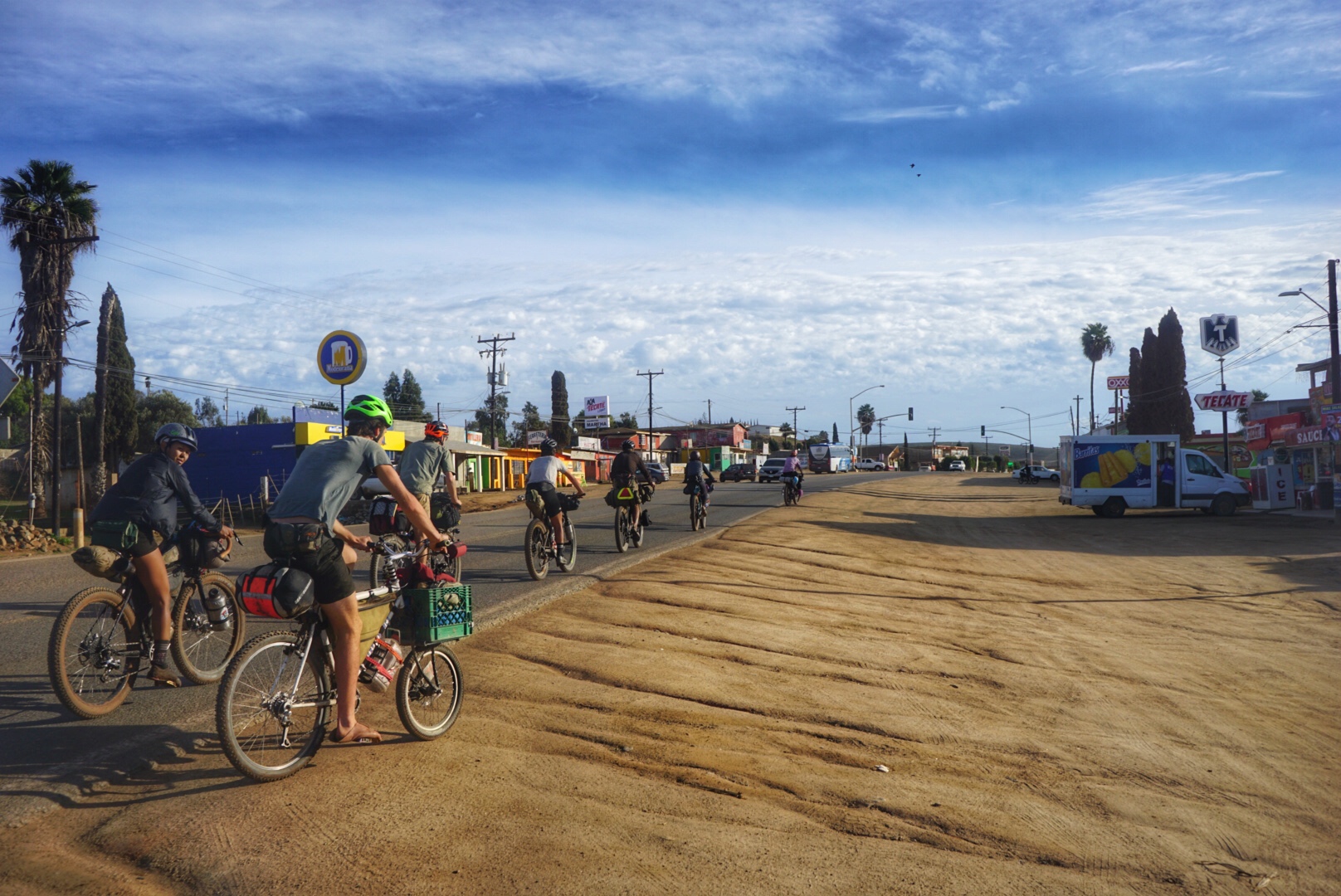
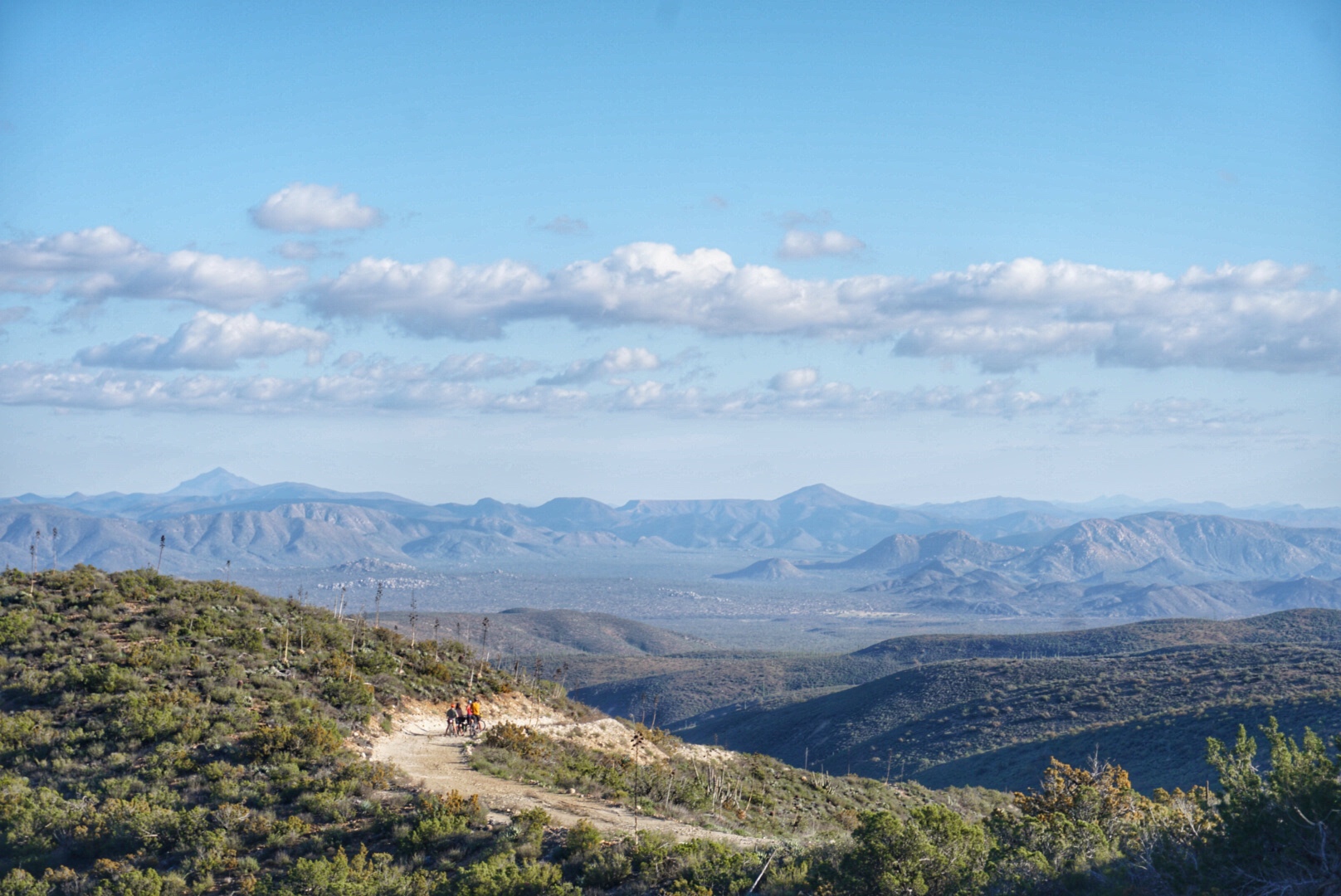
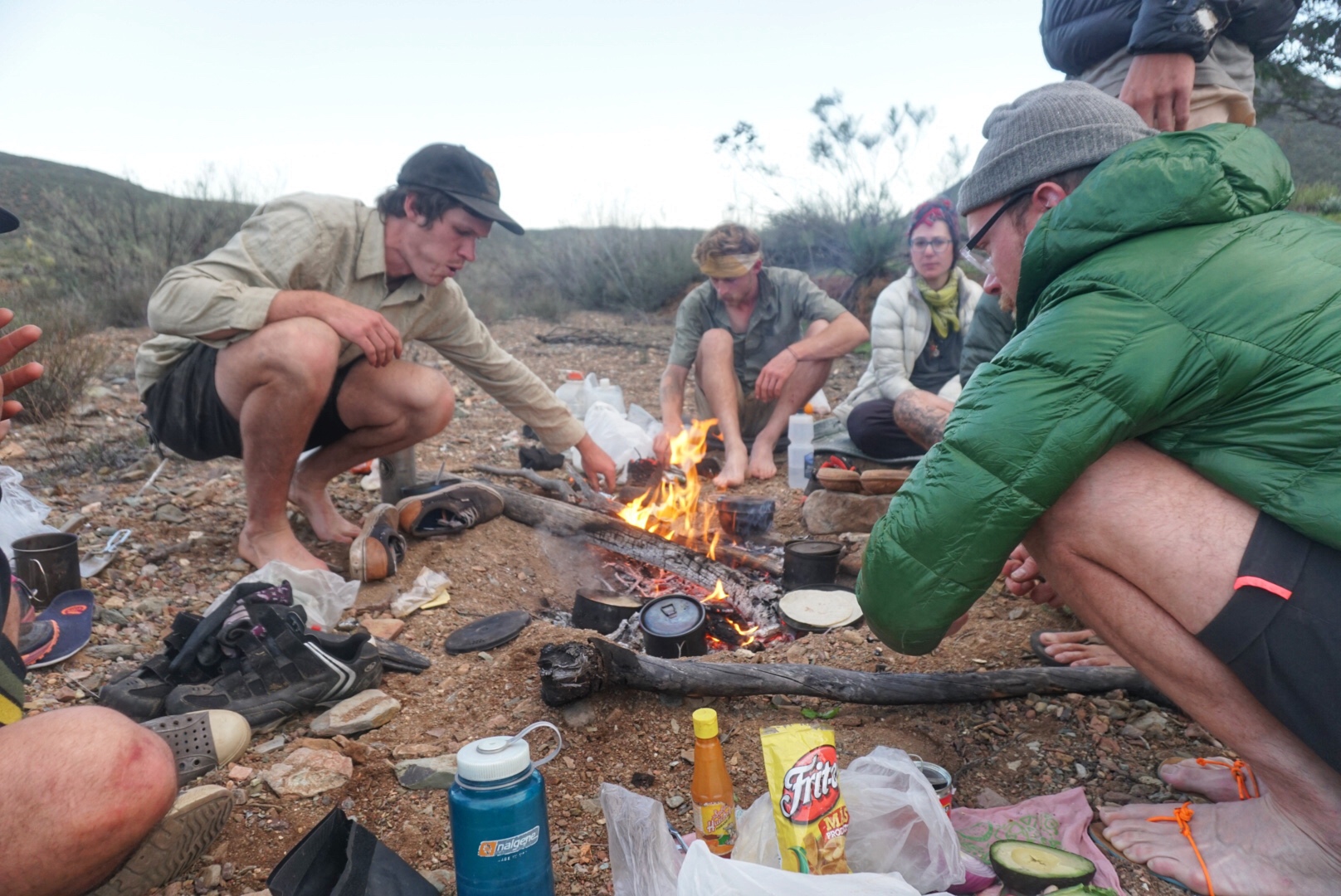
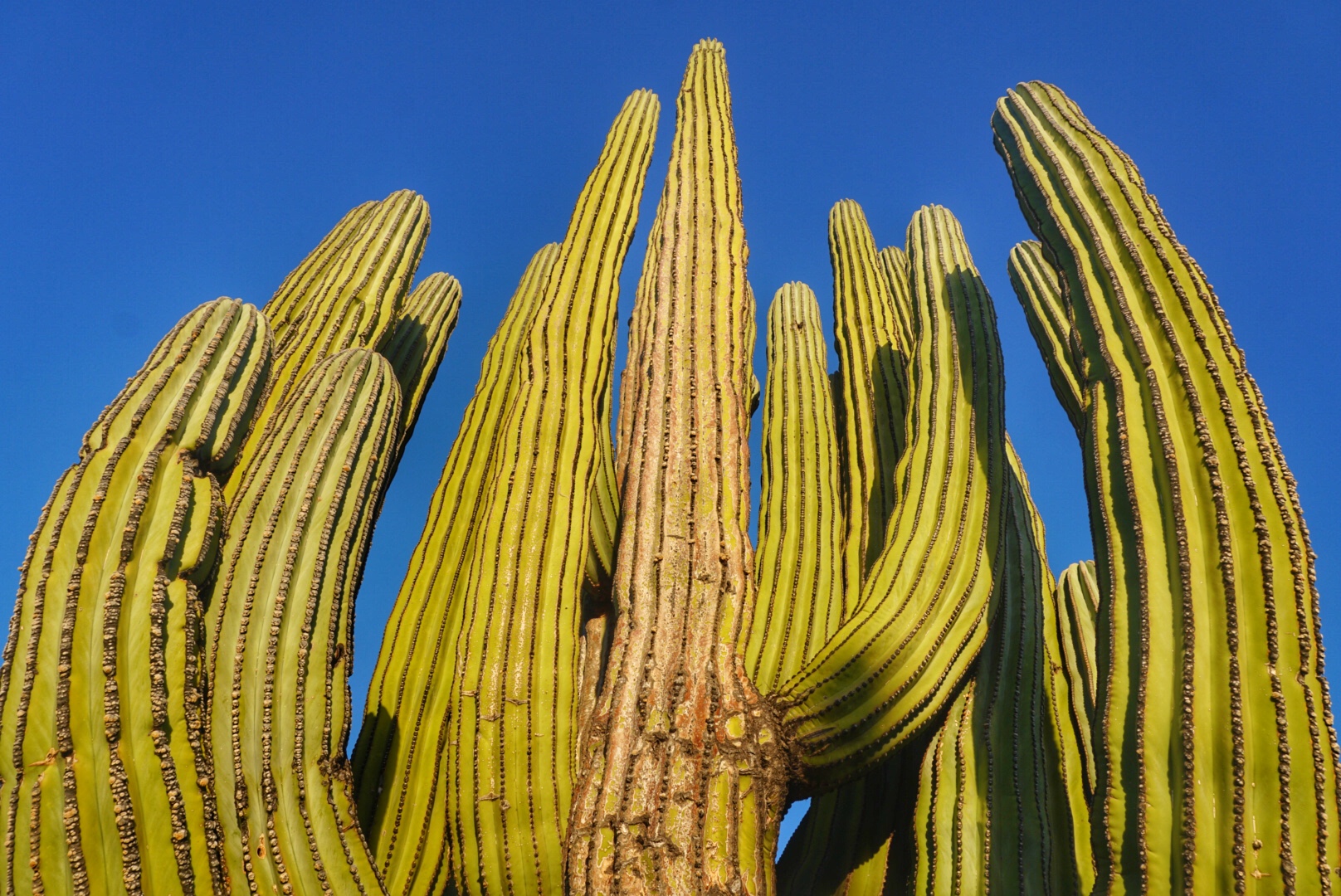
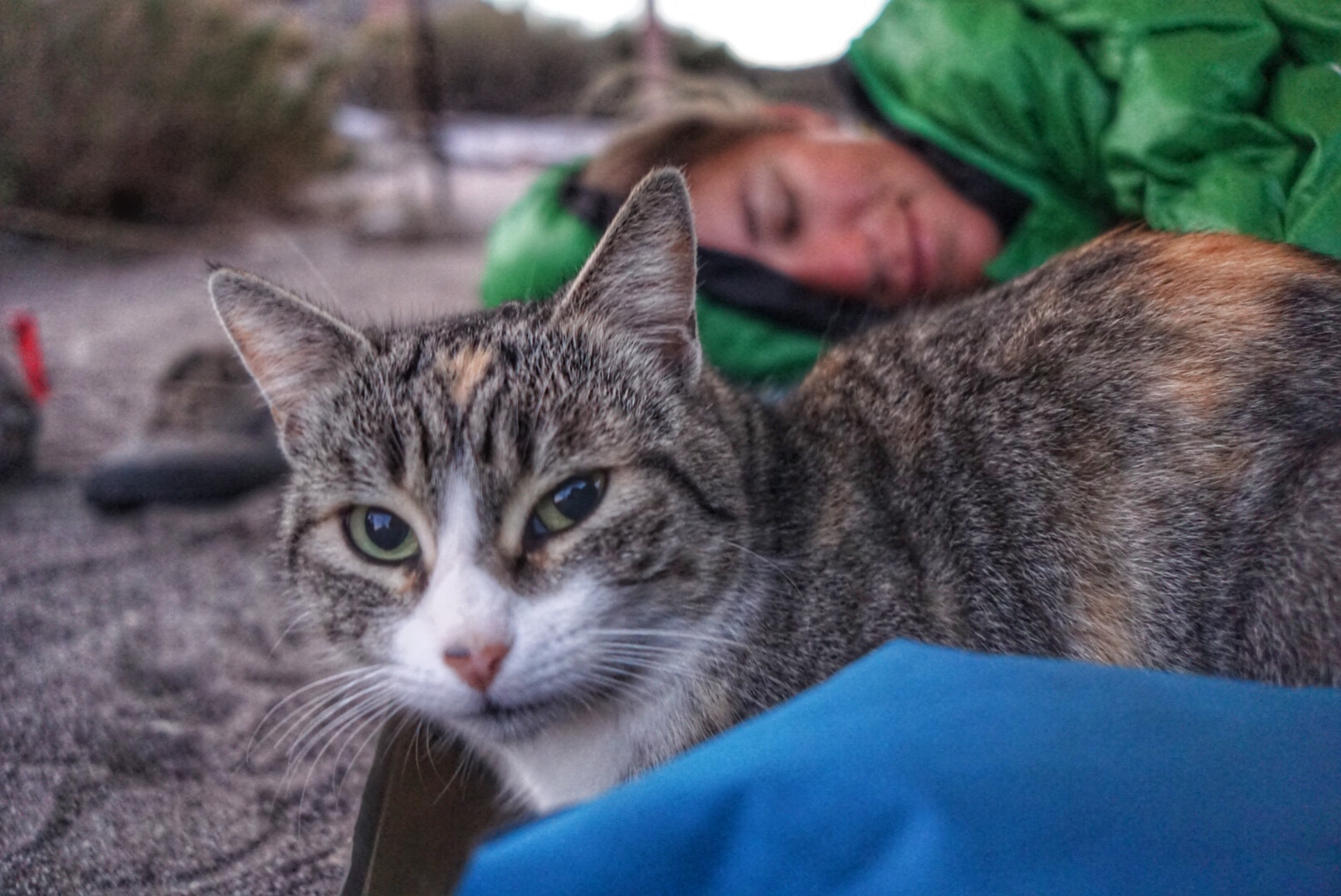
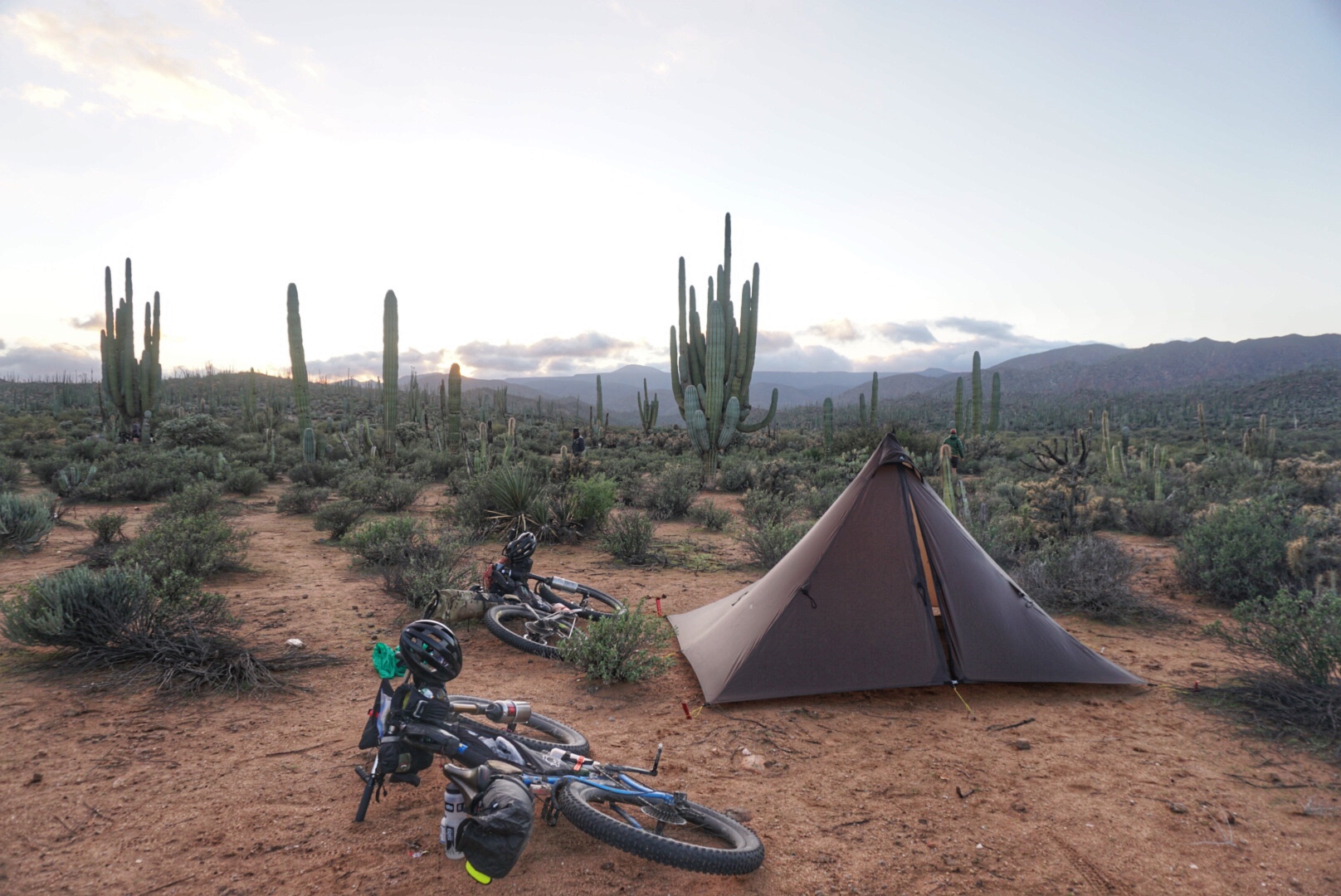
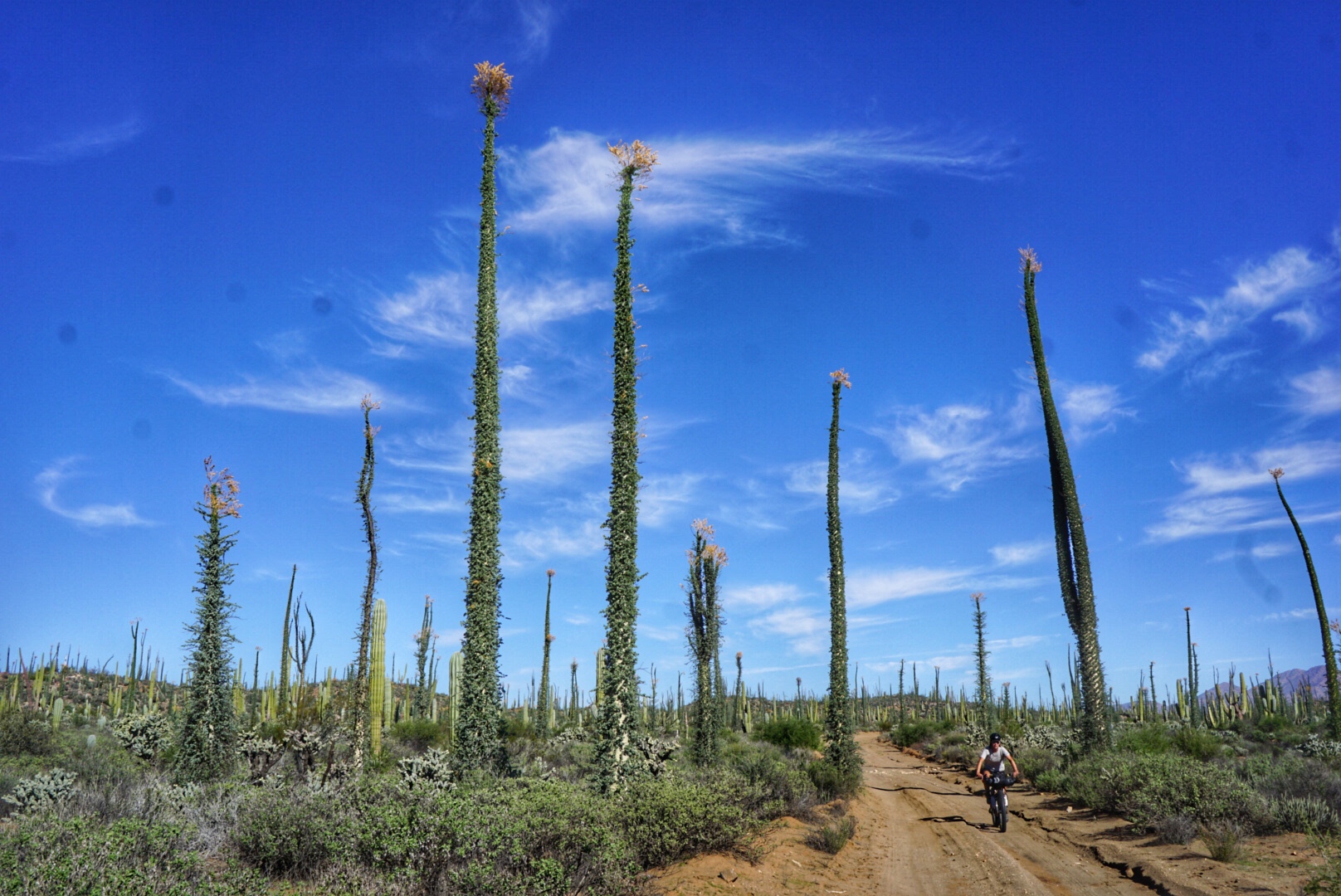
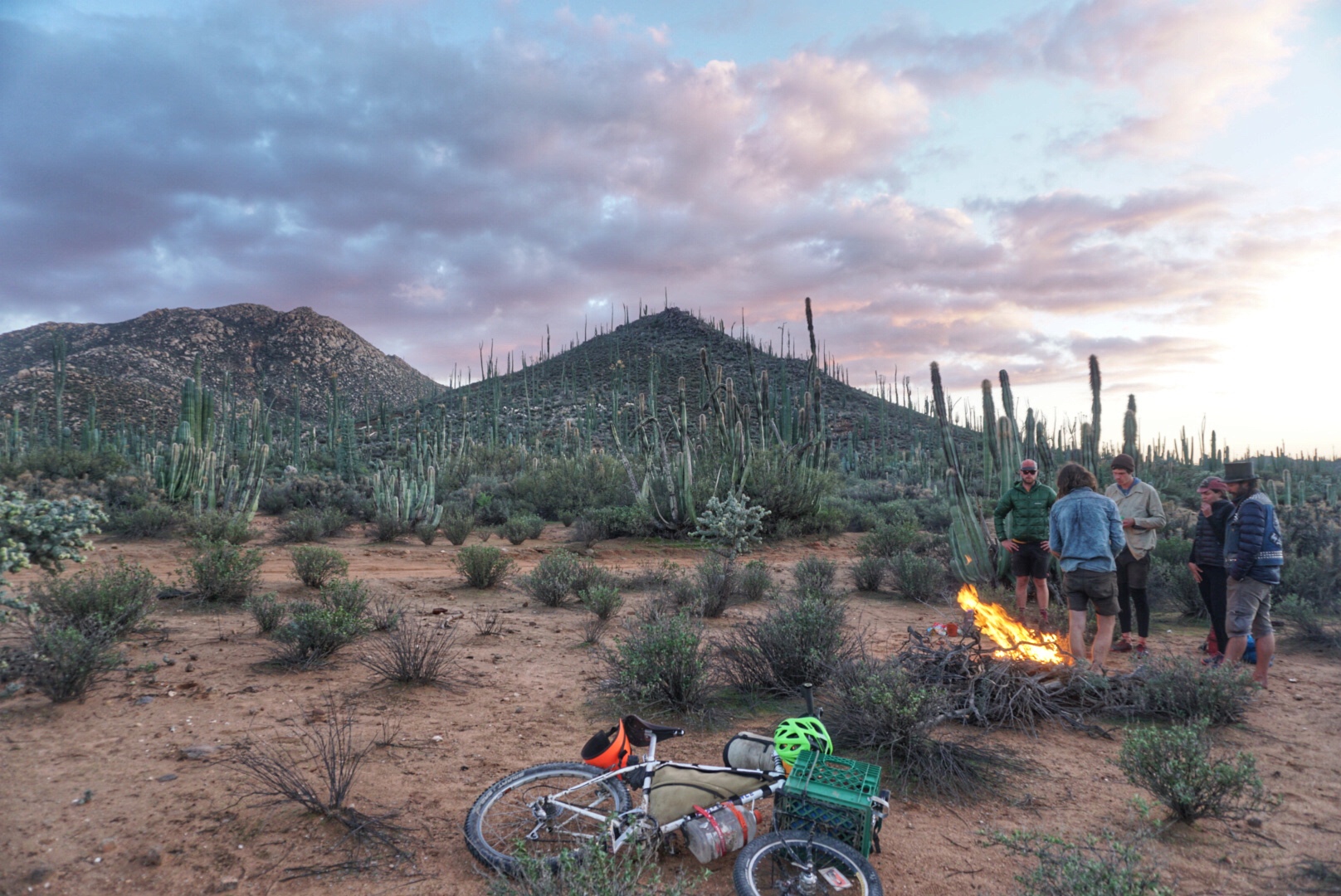
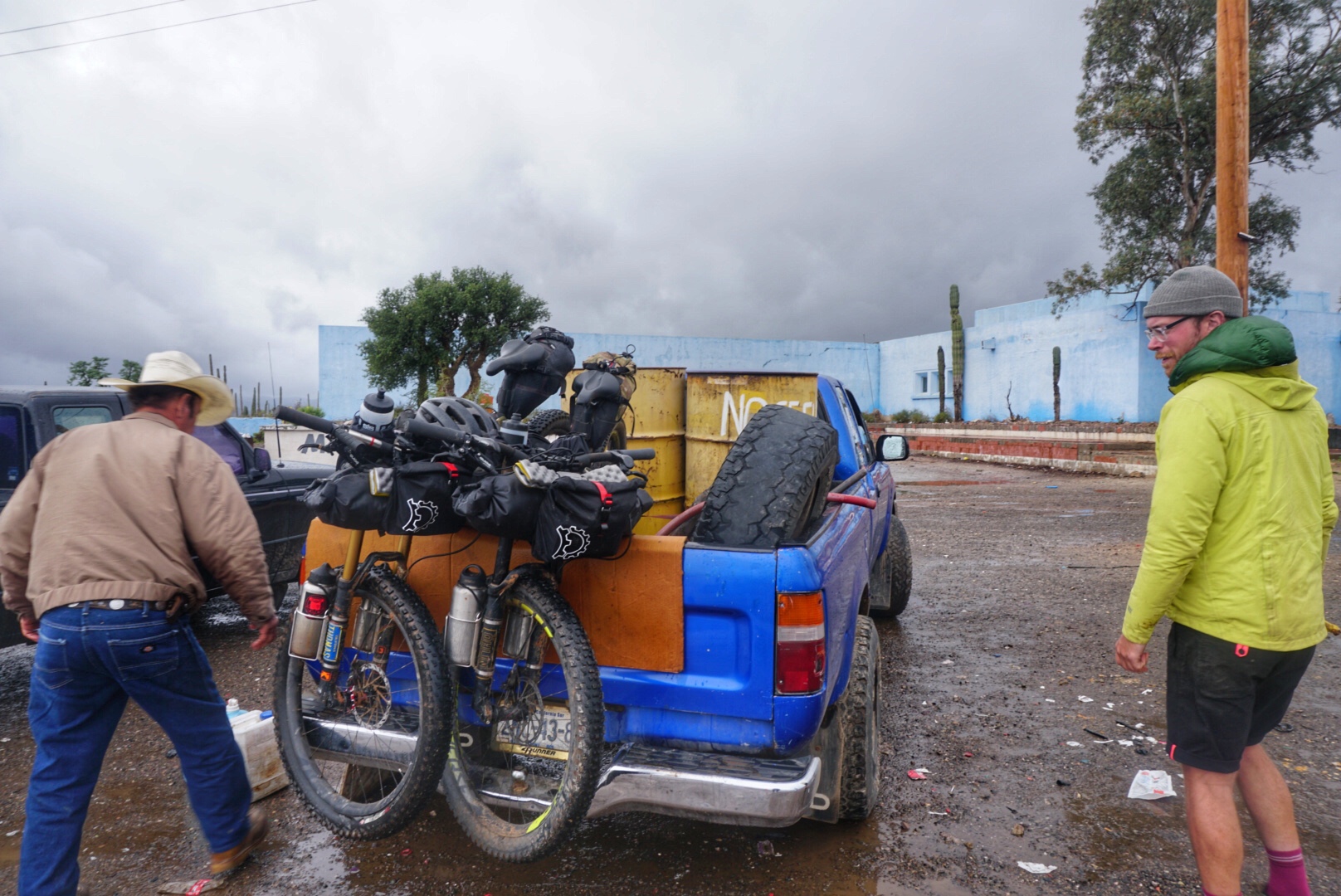
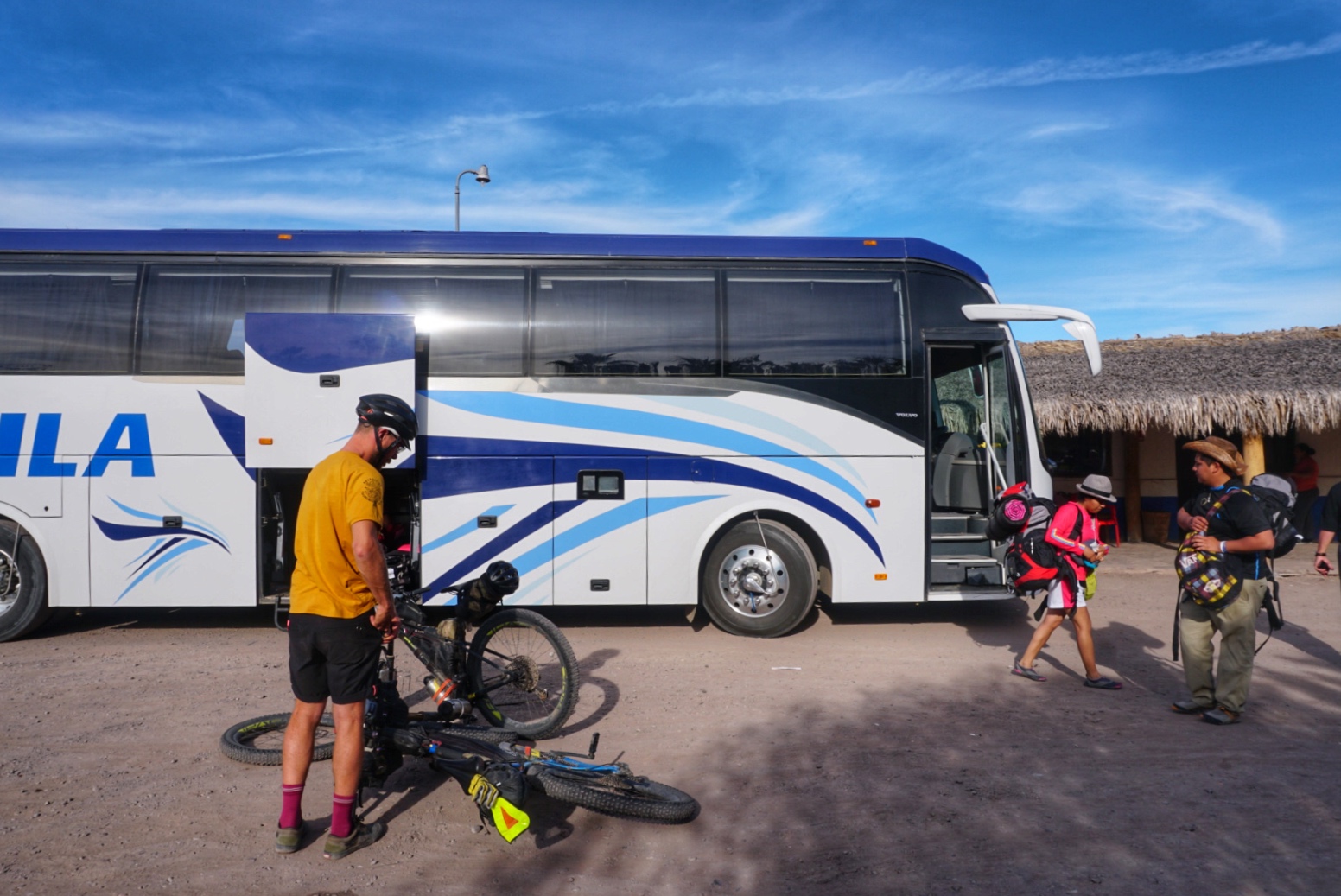
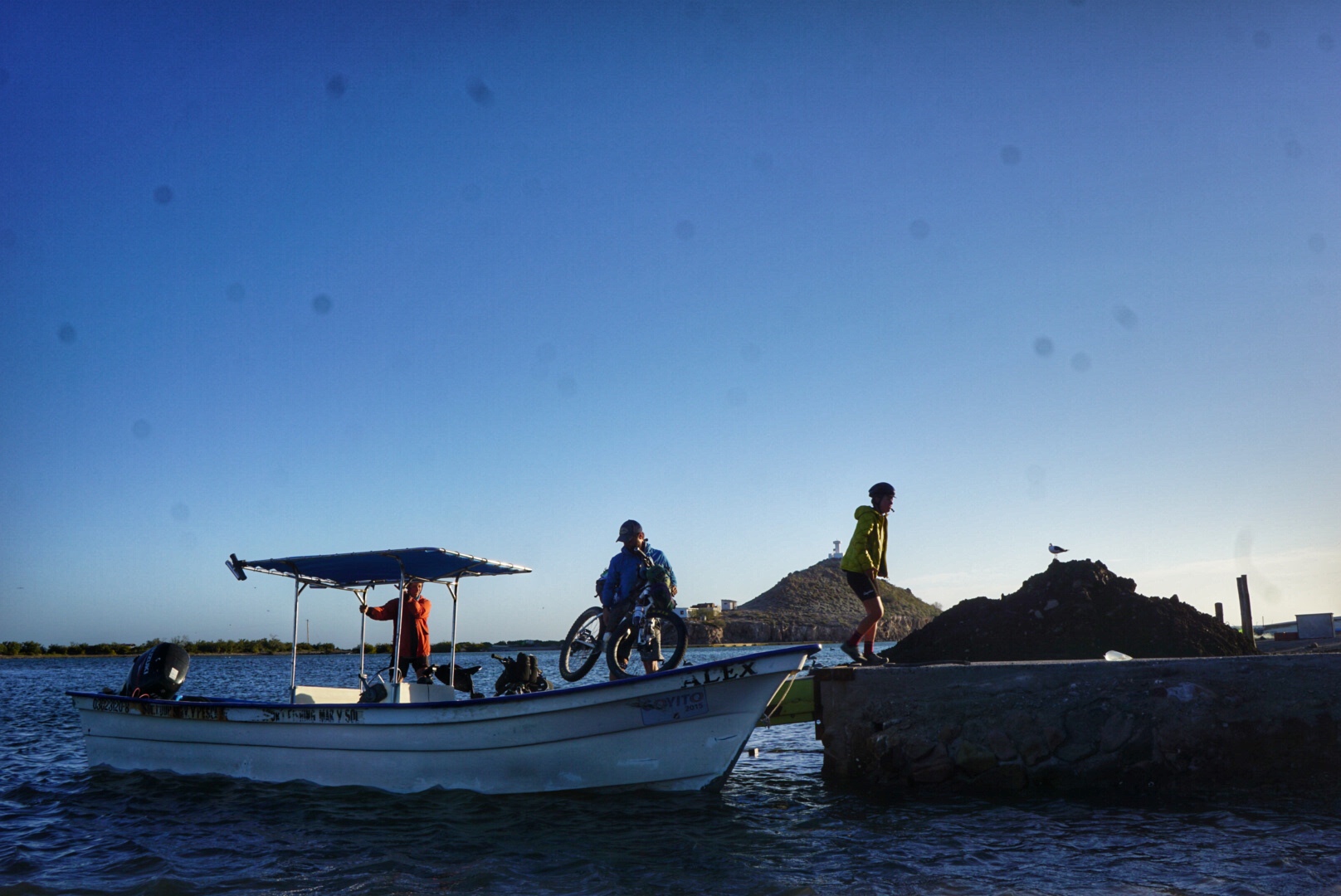
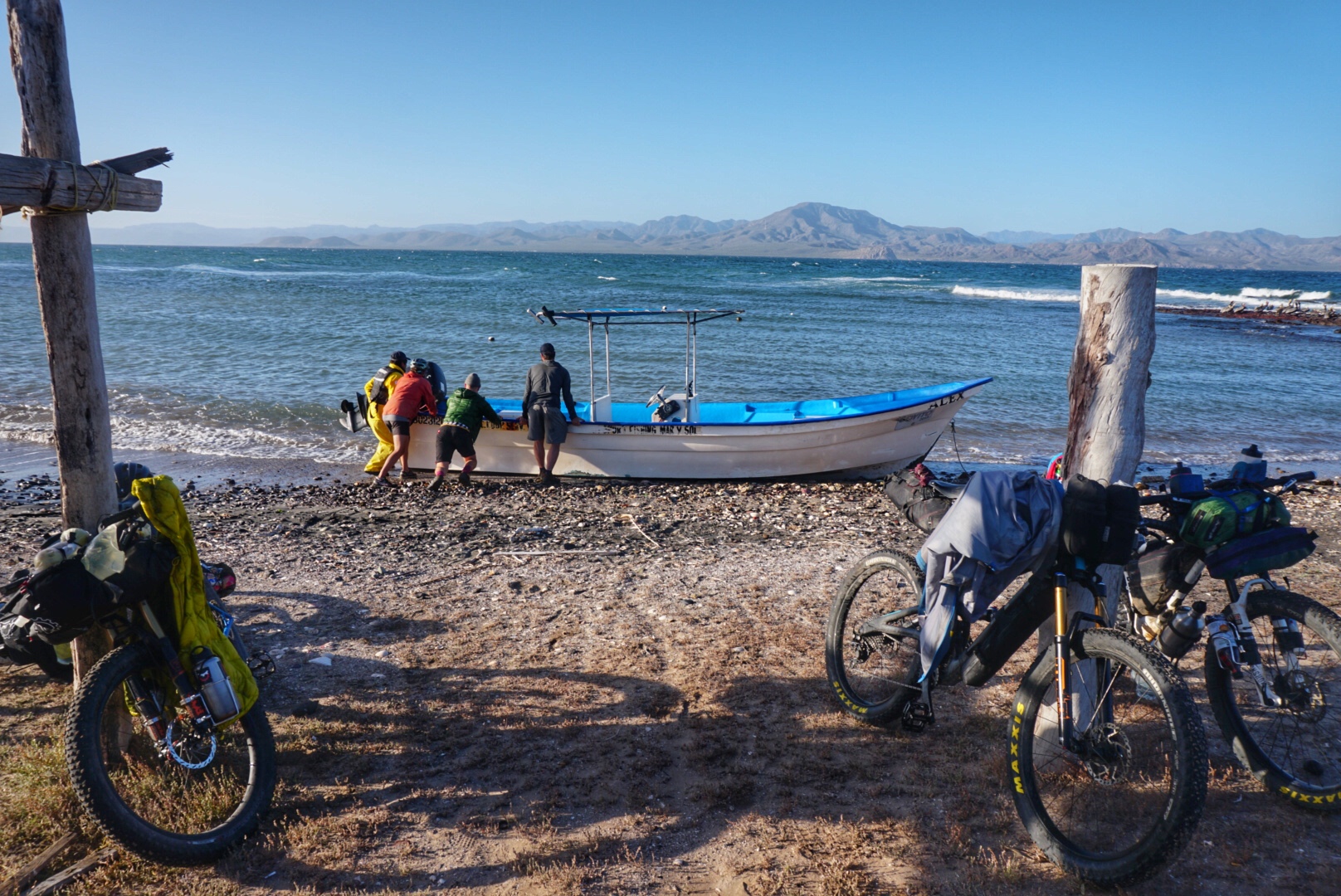
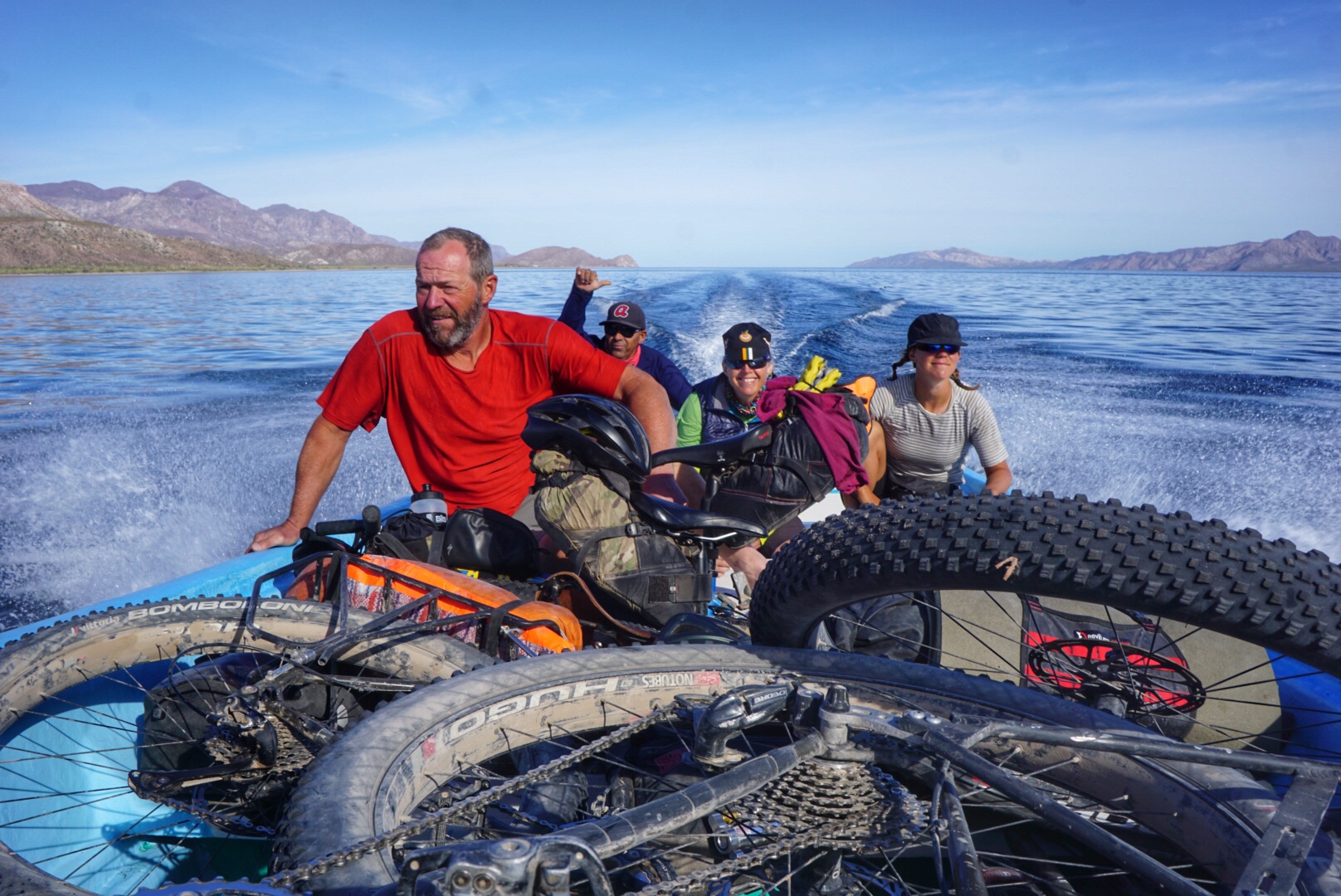
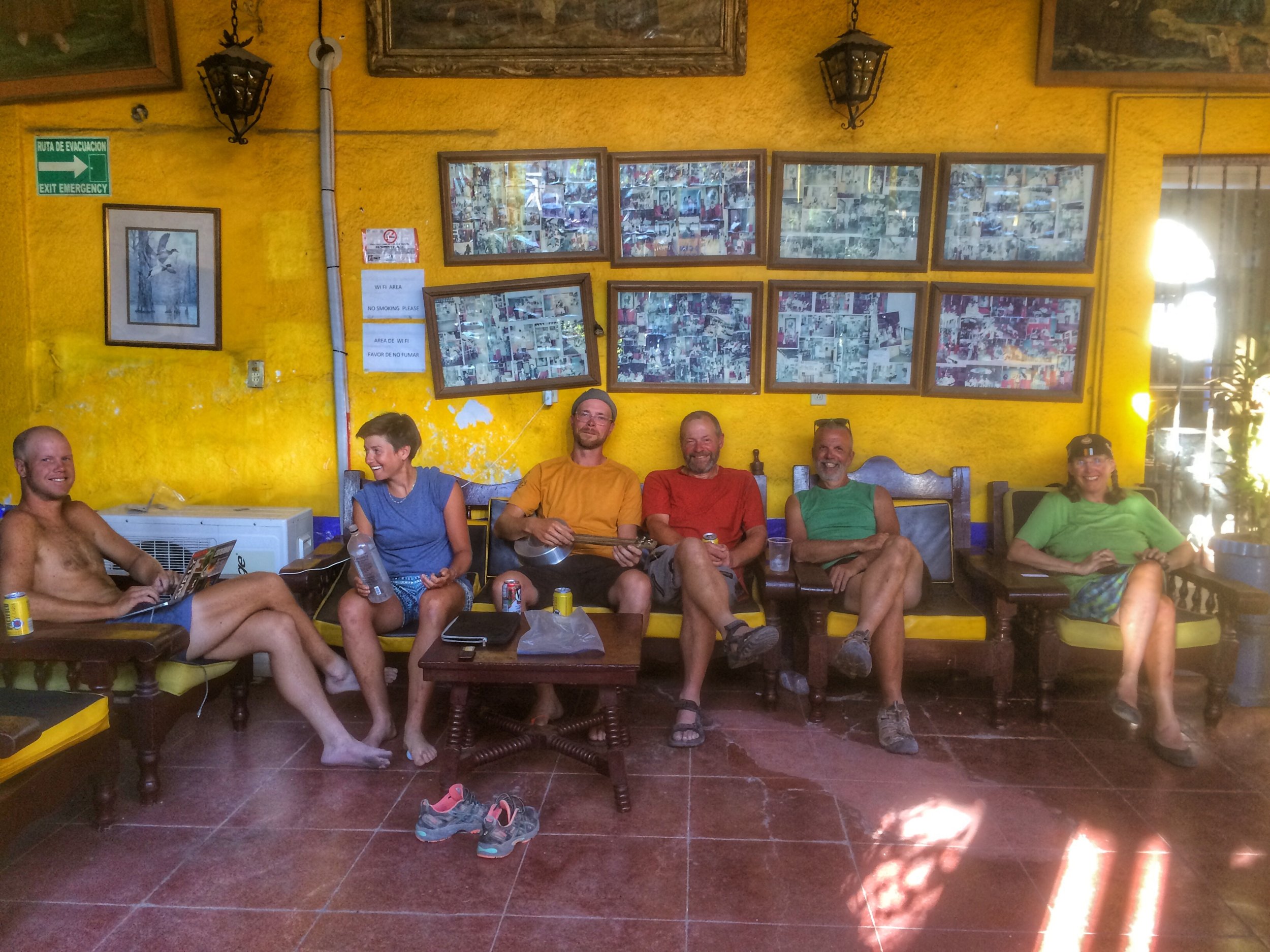
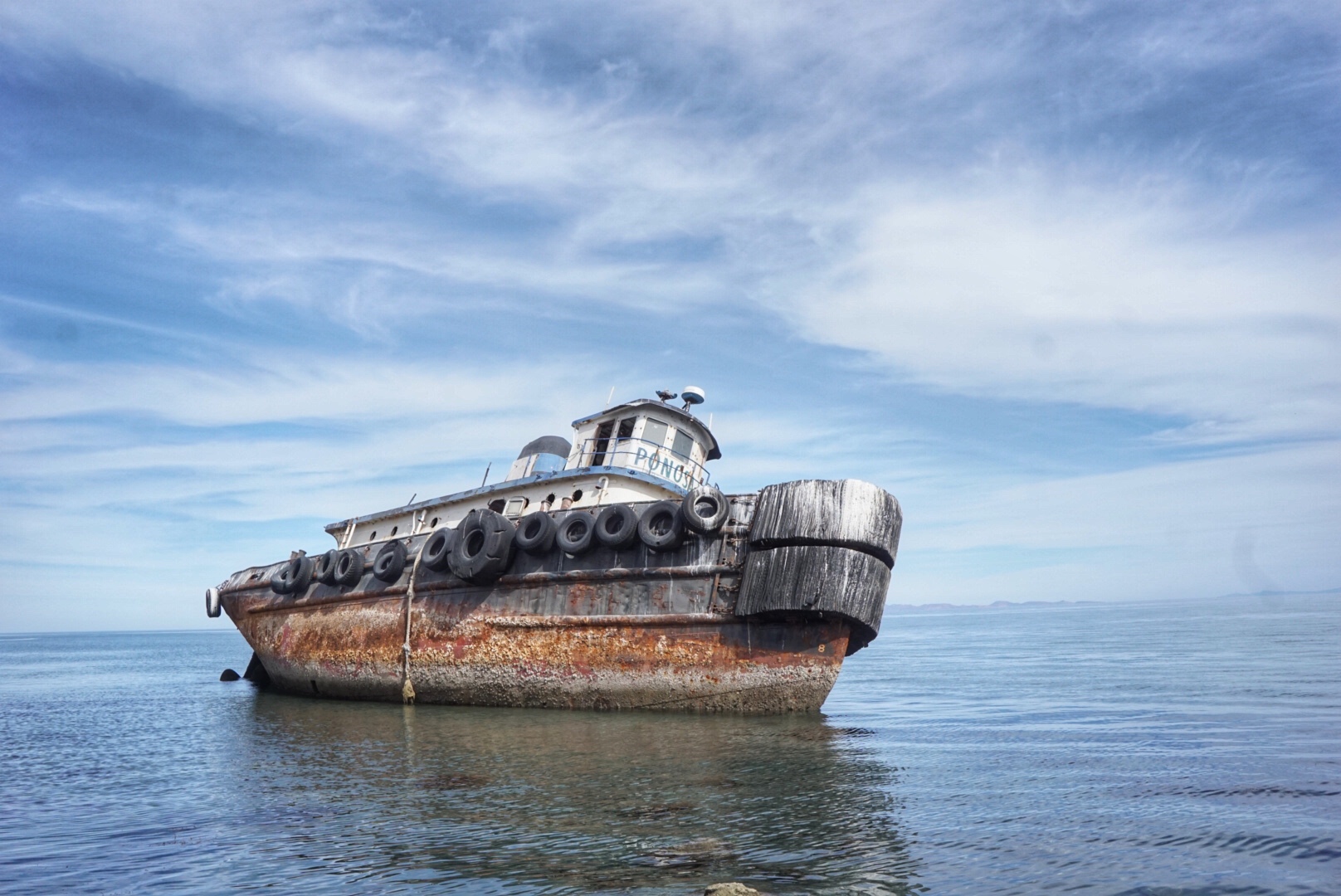
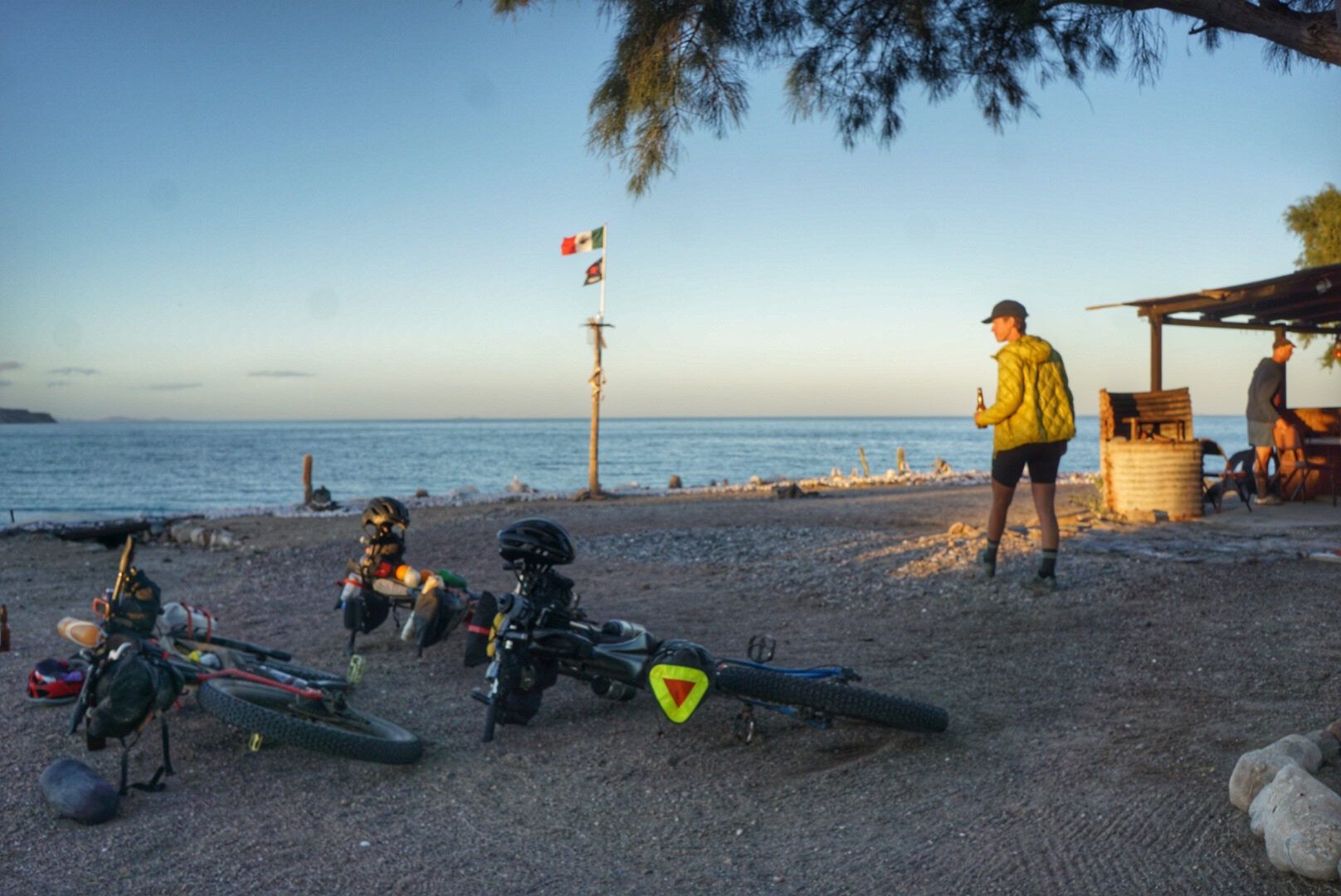
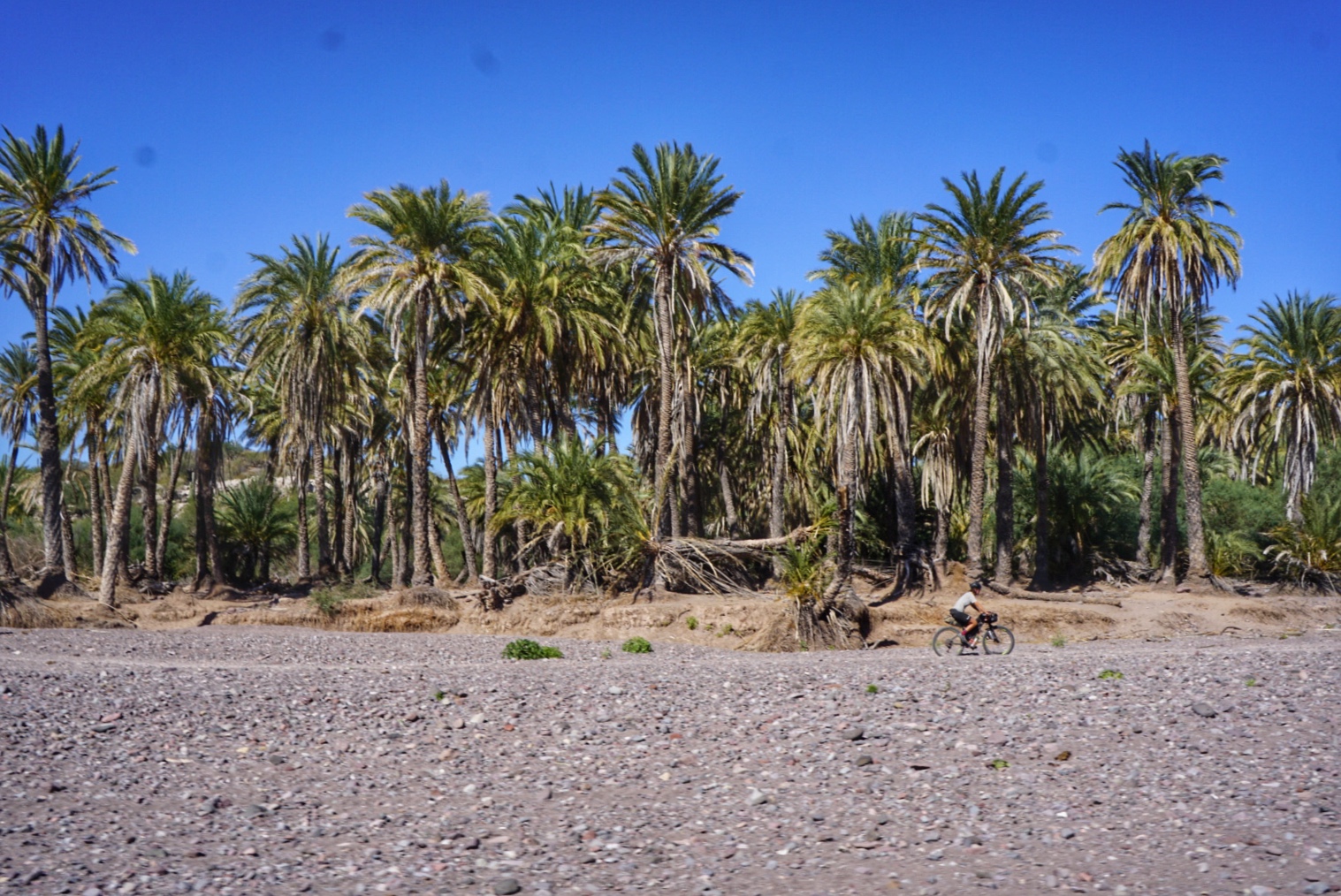

January 2, 2017. Nearly a hundred cyclists gather at Ruocco Park in San Diego for the grand depart of the Baja Divide, a 1,700-mile bikepacking route through the backcountry of Baja California, pioneered by Nicholas Carman and Lael Wilcox during the winter of 2015 and spring of 2016. The Baja Peninsula separates the Pacific Ocean from the Gulf of California and the Sea of Cortez by a series of mountain ranges and several distinct ecological regions, making the terrain and scenery very diverse. The route zig-zags down the Baja Peninsula, crossing the states of Baja California and Baja California Sur and ending with a loop at the southernmost cape. The route repeatedly intersects Highway 1, making it very easy to take a bus or hitchhike to any other point on the route. The group departure was organized to establish the presence of bicycle travel along the route for years to come. The logistics required to show up at the start are a challenge. The terrain necessitates a fairly purpose-specific bike capable of handling rock-strewn roads through the steep mountains, dry arroyos, and deep sand in the thorny desert. Bikes must be equipped with food and water storage for 160- to 225-mile stretches with no substantial resupply or water options, encouraging minimalism in shelter, clothing, and non-essential amenities. Weather is a worthy source of fear. Roads can be dry and fast one day and impassable the next, forcing riders to choose between staying put or pushing on through tough conditions. Cyclists likely have to be self-employed, unemployed, seasonal, or taking leave to have the time required to make it through the route. At a 25-50 mile per day average pace, the route takes about 1-2 months, although a motivated rider could shave some time off. Lael Wilcox holds the fastest known time at a blistering 11 days, 13 hours.
The inaugural ride of the Baja Divide is not a competition. The amount of time each cyclist can spare determines much of the rider’s trajectory. Some choose to make haste, riding every mile for 1,700 miles with the goal of getting to the end before their allotted time is up. Others take it slow to soak it all in. Some make it and some don’t. Some hitchhike, some bus, and some take a boat.
From nearly 100 riders, we break down to a big group of 30. Between our luck, weather, and susceptibility to communicable diseases, the unpredictable is inevitable. Entropy ensues. After two weeks we’re down to 14. After a third week we’re just six. Then, we’re two, but a quick bus ride changes everything. We see people we haven’t seen since the start. We ride together, then we ride alone. Priorities, pace, and lifestyle dictate the longevity of our little riding groups. We gather in big towns to rest, use wifi, eat, repair, and explore together.
We’re trying to catch a ride on a local fisherman’s panga boat to gain passage to Los Hornitos, a remote peninsula on the other side of the Bahía de Concepción. Finding a ride has proven to be more difficult than we expected. High winds are causing dangerous water conditions, and most of the local fisherman are hunkered down until the conditions improve. After three days we are eager to move on. We roam the streets of Mulegé in search of a fisherman willing to take on the passage. Finally, we meet Francisco in the town square, and he agrees to take us across the bay the following morning during a small window of opportunity when the wind and water conditions will be less dangerous.
Our friends Joe and Leia have also arranged a boat, and a group consisting of Rafa, Justin, and Ryan want to squeeze in where they can. Colleen and Brett are also in town, but foreseeing an eventful boat ride, they opt for the paved alternative out of town. We pack our bikes the night before in anticipation of our boat trip and the next 225 miles of riding with limited resupply. Those of us going to Los Hornitos make plans as a group to meet and ride to the fisherman’s beach together to ensure everybody has a ride, but Rafa, Justin, and Ryan are still eating breakfast when it’s time to leave. Not wanting to miss our chance to cross the bay, we ride to the beach without them.
Joe and Leia’s skipper, Alex, is there. His boat is in the water and is ready to launch. Our boatman, Francisco, is nowhere to be seen, and neither are Rafa, Justin, or Ryan. A rushed and confusing five minutes later, we find ourselves in Alex’s boat with Joe and Leia. In the madness of cramming his small boat with four mountain bikes heavily loaded with food and water, I don’t take the chance to grab my rain jacket, a decision I questioned after noticing that Alex is dressed head to toe in waterproof skivvies. “For the way back against the current,” he says.
The first few minutes of our boat ride are relatively calm, until we pass the rock jetty of the lighthouse, where we learn just what 20 mph winds feel like in a small, open-hull boat in big water. As four- to six-foot waves come crashing against the boat, Alex pushes the throttle to climb the next set. With every thrust to climb the wave, there’s a release to land on the other side and a consequent thud, jump, and bang of the boat and everything and everyone in it. Wave after wave comes spilling overhead and into the boat, soaking us in salt water. Tense and wide-eyed, we hang on to whatever we can wrap our arms around for what feels like the longest 30 minutes of our lives. The urgency of our skipper and the severity of the conditions that delayed our travel are now obvious to us. We’re so overwhelmed by adrenaline and relief that we could kiss the sand when we land on Los Hornitos. We graciously tip and thank Alex for getting us safely across and push him off to make it back across the bay against the current, which apparently is more dangerous than than the direction from which we came.
We see another boat heading toward the shore just as we begin to navigate our way down the deserted peninsula. It’s Francisco’s boat with Rafa, Justin, and Ryan, heading our way. We regroup and laugh at the confusing and eventful chain of events that got us all here and ride some miles together before separating when the three of them go to visit with a local rancher. By 3 p.m., Tom and I are content to stop for the day and camp beneath a vacant beachside palapa, while Joe and Leia opt to keep pushing forward in search of a hot meal. We spend the night at the beach, looking for clams and mussels to add to our soup and enjoying a driftwood campfire and easy life under the palm frond lean-to.
Over the following days Tom and I ride alone from the gulf coast into the mountains, stopping at small tiendas to replenish our food and water supply with whatever we find. Some stores have juice, chips, and cookies, but no water. Others can make us a meal and replenish our water. We find a bag of chips and a sleeve of cookies at one store and a few cans of tuna at the next, which tops off our food supply as we move along. Tuna becomes less appealing the further we go, and strong cravings for a simple bag of refried beans, fresh vegetables, and tortillas are creeping their way into our psyche.
The heat intensifies with each day, and my Garmin reads 95 degrees. We dive for shade when it’s there. The hills grow steeper and more rocky as we climb into the Giganta Mountains, a system of canyons dotted with freshwater and date palm oases throughout which relics of old missions are the center of tiny communities where people live a simple life. We take time in these places, sitting in the water and cleaning our salty clothes. We’re out of real food and our fatigue is evident. It’s been five days since we left Mulegé when we finally reach the small mission town of San Javier, our last minor resupply for the next 100 miles. Over beers, we deliberate over whether to fill our empty bottles with the only available drinking water in town, 24 individual 12 oz plastic bottles. San Javier is a popular tourist spot, and we linger in conversations with vacationing tourists and indulge in another beer, delaying any decision-making. By the time we peel off, it’s the heat of the day, and the prospect of riding another 27 miles of off-route pavement to the coastal town of Loreto for some real food, culture, and a shower sounds good to us. What we assumed would be a 27-mile descent to town is in reality a roller coaster of steep, hot tarmac that forces us to dig deep for the “easy” way.
Loreto is a whole new environment, a low-key coastal mission town surrounded by comfortable middle class Mexican life. We spend less than 24 hours eating, exploring, and resting up before catching a bus back to the next town on the route, Ciudad Constitución. A day later we’re back on route and in the middle of the desert, headed to La Paz along another long, tough stretch between resupply opportunities. The steep and rocky terrain continues to challenge our tired bodies, while the heat demands a slow pace and many siestas in the shade. During one of these siestas a shepherd joins us, offers us a cigarette, and boasts of the strawberry ice cream and beer that could be found in the small fishing village of San Everisto, slightly off route. The detour sounds worth the reward, considering our diminishing water and food supply. Tired and desperate to make it to town before total darkness, we make the final climb into town just as the sun drops behind the mountains, casting a shadow over the coast of the Sea of Cortez. To our disappointment, we find that the only tienda in town has no water and mostly candy, cigarettes, and potatoes for sale. Are we in the right place? Where’s the ice cream? Where’s the beer?!
We leave the shop without purchasing anything, and just as our patience starts to diminish, we see two people waving at us from across the beach. We’re shocked to see Colleen and Brett, who we haven’t seen since they opted for the paved alternative out of Mulegé. They had taken a day off here after struggling through the brutal heat and terrain of the last mountain segment. We catch up at Lupe and Maggi’s restaurant, where the host has an endless supply of cold beers and fresh fish, and an idyllic spot available to camp on the beach, though the strawberry ice cream remains a mystery lost in translation. We eat, drink, exchange tales of woe, and are merry to be in one another’s company again in such a beautiful setting. Over coffee the next morning, we talk reluctantly about the washboard roads and steep hills of the route’s next segment. Colleen and Brett had ridden a significant portion of it, but had to turn back to San Everisto when they realized they needed the resupply. Sensing our mood about the ride ahead, Lupe enthusiastically offers to take us in his boat to our next waypoint, Punta Coyote. Within an hour we’ve launched on the second panga boat ride of our tour. The shortcut saves the day, not just 17 lumpy miles, unexpectedly turning a temporary low to a euphoric high point of our Baja Divide experience. In this case it was a calm boat ride, showcasing pastel ribbons in the sandstone cliffs along the shore, with energetic dolphins guiding our way.
On the Baja Divide you may get stuck in the mud, you may have to hitchhike, or you could come close to falling off a panga boat. A coyote could steal your sunglasses, a skunk could bite you in your sleep, and you could get diarrhea for 10 days in the desert. You could also swim with whale sharks, snorkel with exotic fish, witness bioluminescent algae, or live on your own private beach for a while. Your bike could get stolen, but you might even get it back. There are as many unique Baja Divide stories as there are individual riders. Come find adventure in Baja, welcome the unexpected, and return to tell your story.
